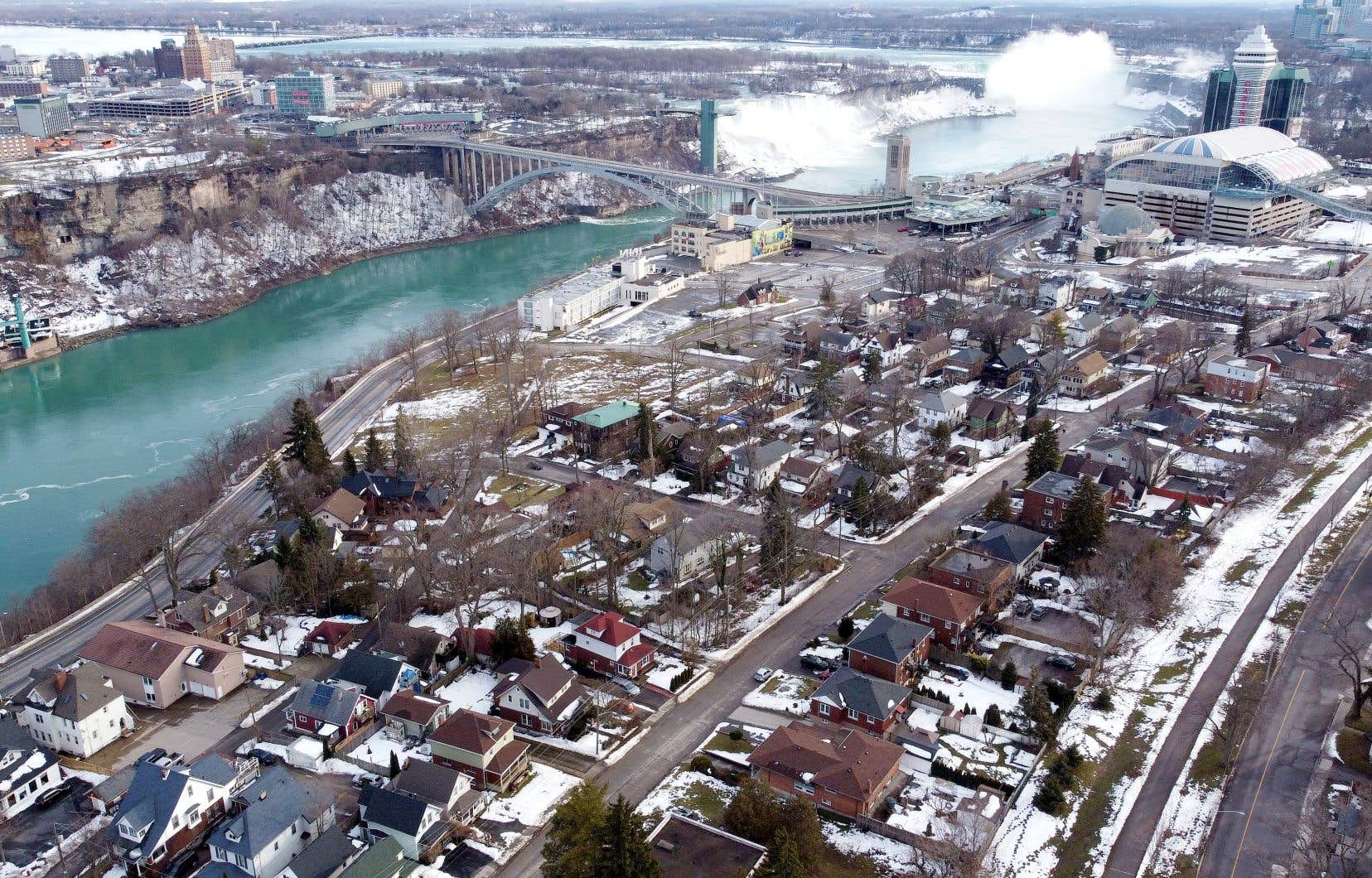After experiencing a new “influx” of asylum seekers at the end of 2023, the situation has “stabilized” in Niagara Falls, according to community stakeholders. Others deplore a lack of long-term vision from the federal government, given that they expect a resumption of arrivals this summer.
“The crisis that occurred two years ago has eased. […] It’s been stable since January,” said Bonaventure Otshudi, director of newcomer services at the Hamilton/Niagara Community Health Center, which helps French-speaking newcomers settle in Canada.
In July 2022, nearly 5,500 asylum seekers were transferred to Ontario at the request of Quebec, which wanted Ottawa to find solutions to manage the influx of arrivals via Roxham Road. More than half of them were relocated to hotels in Niagara Falls, occupying in February 2023 some 1,800 rooms, according to the Niagara region, in around ten establishments.
But since the closure of Roxham Road on March 25, 2023, many asylum seekers have continued to arrive on Canadian territory, notably through Pearson Airport in Toronto and Montreal-Trudeau International Airport. “And we send these people to our region,” explains Mr. Otshudi.
Like in Windsor, where there was a “spike” of asylum seekers in February, according to Workforce WindsorEssex’s director of community and workforce development, Kelsey Santarossa, another “mass influx » of immigrants arrived in Niagara Falls at the end of 2023. They entered by air with a visa, and sought asylum at the airport, says Wally Hong, the pastor of a church in the city that helps new arrivals.
Among the asylum seekers encountered by The duty, a Kenyan had just arrived barely two weeks ago. More than 2,200 asylum seekers are currently housed in four hotels in Niagara Falls, according to Immigration, Refugees and Citizenship Canada (IRCC).
Lack of planning
As summer approaches and the arrival of warmer temperatures, Bonaventure Otshudi predicts a new “increase [du nombre] asylum seekers”, explaining that several people are waiting “for the cold to pass before making the jump”. We must therefore expect a new wave of arrivals, in the middle of the tourist season.
At this time of year, asylum seekers are moved to other hotels, cheaper or more remote, to make room for vacationers. A practice decried by Olayinka Animashaun, the founder of the Niagara African and Caribbean Cultural Organization. She accuses the federal government of repeating the same maneuvers every year, without finding a longer-term solution.
“They move them like goats. […] It happened last year, and it’s happening again this year. Why do we keep doing the same thing? » She would instead like the money used to pay for hotel rooms to be invested in building or converting old properties into shelters.
Mme Animashaun does not think that the situation has stabilized. “This problem will continue. It won’t change. […] They keep coming [au Canada] and they will never stop. »
According to M.me Santarossa, conflicts, natural disasters or political announcements, like the one made last week by Ottawa on the reduction of temporary immigration, could also influence the number of asylum requests in the coming months, she says. speaking in a personal capacity.
The more reluctant City
According to Mr. Otshudi, if the mayor of Niagara Falls, Jim Diodati, “rubbed his hands” at the idea of welcoming so many asylum seekers at the start of the crisis, the elected official has since become disenchanted. He judges that Mr. Diodati is now more “reluctant” to the idea of welcoming asylum seekers, preferring to accommodate tourists.
“He was very happy to have the workforce, but the mayor did not understand that, to arrive [au moment où quelqu’un peut travailler], it’s quite a process. It takes a work permit, it takes an immigration medical exam,” he said, also citing language challenges.
The City of Niagara Falls did not respond to our requests for an interview.
About 9% of asylum seekers housed in Niagara Falls hotels are French-speaking, notes Mr. Otshudi. “If the person doesn’t speak English, it’s difficult to work in Niagara Falls. » But for the community worker, it is a “good thing”. “We need French speakers to sustain [la communauté] in a minority environment. Otherwise, without immigration, Francophones will disappear in Niagara Falls. »
This report is supported by the Local Journalism Initiative, funded by the Government of Canada.
